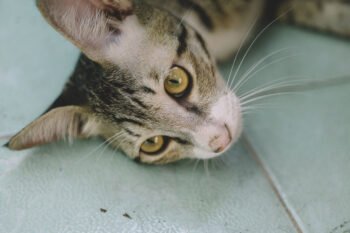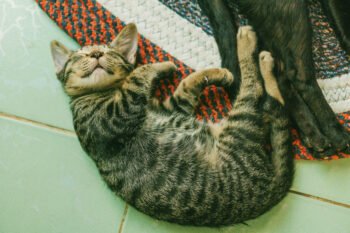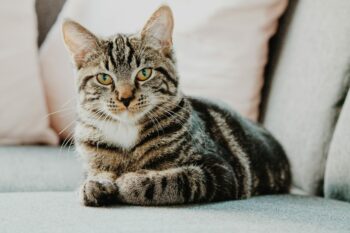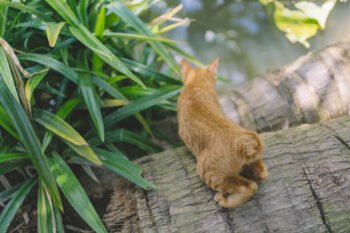Cats have a reputation for being notoriously finicky eaters. In reality, whether they eat or not doesn’t always have to do with the food you feed them. While food choice is very important, the feline drive to chow down also can be affected by such factors as where you locate the food dish, if there are other pets in your house and whether the dining experience has simply become a bore.
Cat behaviorists suggest that there are several steps you can take to help ensure that your feline will eat well on a consistent basis.
Location, Location, Location
The first issue to deal with is to decide where to place the food and water dish (they should be located near each other). Pet owners often select locations that are out of the way, such as in a basement or laundry room. But too often they make the mistake of placing them near the litter box. “No one likes to eat near the bathroom,” says Nancy Peterson, an issues specialist with the Humane Society of the United States and owner of three cats. Cats have a keen sense of smell, and odors emanating from a litter box could ruin almost anyone’s appetite.
Keep the food and water dishes away from any noisy appliance that may turn on suddenly and startle a cat getting ready to dig in. Avoid placing the bowls along a well-worn path where children or dogs may distract or deter a cat from enjoying its meal. “Some people may have dogs that also enjoy some cat food so they will feed the cats on a counter or in the laundry room, possibly on the washing machine or dryer,” Peterson says. “If that’s done at a time when you’re not using the washer or dryer, that’s fine. Otherwise it could frighten kitty.”
Two Bowls for Every Cat
When you have more than one cat, it is essential to provide each with its own food and water bowl. You may even want to feed each cat in a different room. There are several practical reasons for this. “Some cats do what is called ‘resource guarding,'” says Marilyn Krieger, a certified cat behavior counselor (CCBC) in Redwood City, Calif., who runs a Web site called The Cat Coach. “If there are conflicts, they may try to keep other cats from eating. They can do this by merely lying in the middle of the room so that one cat has to go past the other cat to get their food.” That’s often enough to ruin the rival cat’s appetite.
Distancing one cat’s food bowls from those of another feline can also help you keep tabs on which one is eating what and how much. When Peterson had four cats, two were chunky and two were thin. “I had to be the food police and place each bowl in a separate location to make sure the two chunky ones didn’t gobble up the food quickly and let the two thinner ones go without,” she says. Sometimes cats are on very different diets — one may have hairballs and one may have liver problems — and need different foods. In addition, by putting bowls in different places, you can spot potential health-related red flags. If your cat isn’t eating, it could be a sign of ill health, such as tooth decay, a serious illness or a cold.
Bowl Size Does Matter
Cats tend to prefer low, wide bowls for food and water. “Cats don’t really like to stick their face down in something deep, where something hits their whiskers,” Peterson says. Dishes also come in a variety of different materials, from plastic to metal to ceramic. Don’t use a ceramic bowl if you feed the cat on a countertop — bowls have been known to be pushed off counters by eager eaters and shatter when they hit the floor. Consider a bowl that has a rubber bottom that helps it stay put. It’s also important to clean the bowls between feedings, whether you use dry or moist food or both. Water should be freshened daily.
Viva Variety
Exposing your cat to both dry and moist foods is a good idea, experts say. Some pet owners alternate one type of food in the morning, the other in the evening. Cat behaviorists advise feeding your pet at the same time and in the same spot each day. But cats can benefit from a little activity during feeding time. Krieger suggests you put a little dry food in a Whiffle ball or other appropriate, cat-safe bouncy toy with holes in it. Throw the ball and let the cat work for its food, similar to a hunt. “It’s for exercise. It’s a challenge,” she says. “And it can keep them from getting bored.”







